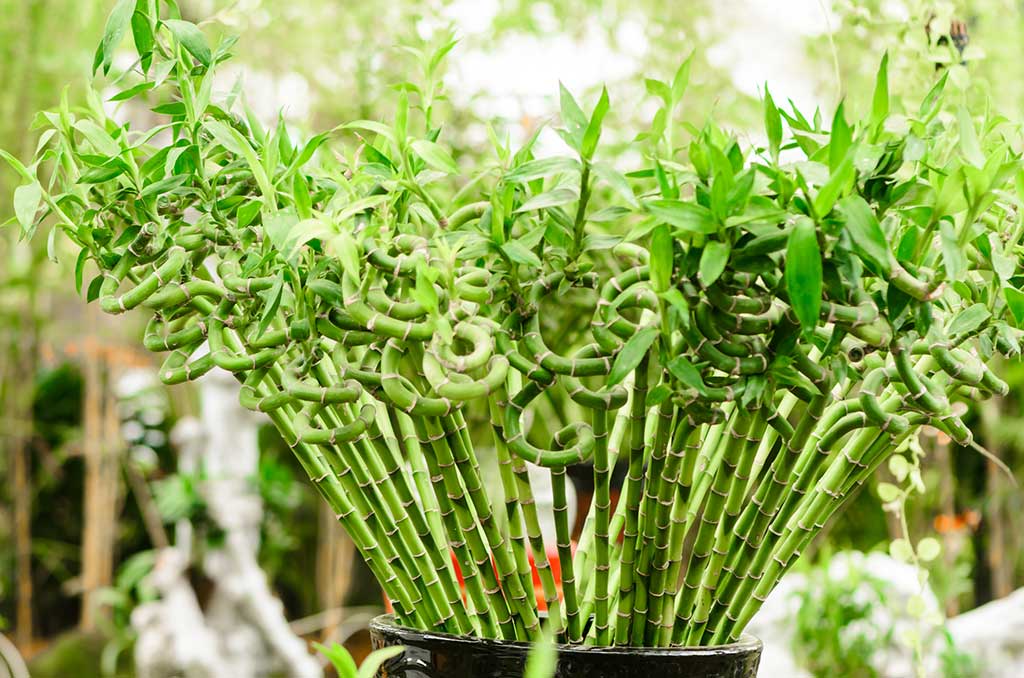A Picture-Perfect Guide to Lucky Bamboo Plants
Lucky bamboo plants are becoming more and more popular as houseplants because of their lush greenery, long history, and reputation as lucky plants. Lucky bamboo plants have graceful stalks and bright leaves that make them beautiful additions to any home. If you’re thinking about getting one, keep reading for tips on how to choose, care for, and take pictures of lucky bamboo.
What Exactly is Lucky Bamboo?
These plants are not bamboo, even though they are called “lucky bamboo.” They are a tropical evergreen perennial called Dracaena sanderiana. They are from Central Africa, but Taiwan also grows a lot of them as a crop. Lucky bamboo stalks are often braided, twisted, or trained into creative shapes to make them look nice. The plants do well in soil or even flower pots with water.
There are a few different varieties of lucky bamboo, distinguished by their leaf patterns:
-
Solid green leaves are the most common. This variety represents the element of wood.
-
Leaves with yellow stripes symbolize the element of earth.
-
White-striped leaves correspond to metal.
-
Leaves variegated with pink and cream are associated with the element of water.
Lucky bamboo plants are pretty easy to take care of, no matter what kind they are. They do best with indirect light and only need to be watered when the soil is dry. Minerals will not build up on the stalks and leaves as much if you use distilled water. Lucky bamboo can live in low light, but if it doesn’t get enough light, it may lose some leaves or turn yellow. Low humidity can also lead to browning leaf tips.
The Significance of Lucky Bamboo
In many Asian cultures, lucky bamboo carries important symbolism. The plants are commonly given as gifts and incorporated into spiritual rituals. Specific stalk numbers, shapes, and directions bear different meanings:
-
Two stalks represent love and happiness in relationships.
-
Five stalks spell out wealth, health, longevity, career, and overall luck.
-
Eight stalks stand for prosperity in new endeavors.
-
Plants with 21 stalks celebrate blessings and good fortune.
-
A coil shape connotes safety and security.
-
Pointing stalks in an upward direction encourages positive growth and change.
Good energy is thought to flow through lucky bamboo no matter how it is set up. It’s easy to see why this magical plant is so popular—it makes people feel good.
Photographing Your Lucky Bamboo
A beautiful lucky bamboo plant deserves an equally beautiful photograph to capture its striking form. Follow these tips for taking great pictures of your lucky bamboo:
Lighting
Lucky bamboo looks best photographed in soft, natural lighting. Bright overhead light creates harsh shadows that hide the texture and color of the leaves. Diffused window light is ideal. If you need supplemental lighting, use a soft box or bounce flash to fill in shadows.
Background
Keep the background simple so the lucky bamboo can take center stage. Plain white poster board or fabric makes a clean backdrop. You can also situate the plant in front of a light wall in your home. Just make sure there is good separation between the subject and background.
Angle
Capture your lucky bamboo from multiple angles. A side view highlights the shape and height of the stalks. Shoot from above to emphasize the leaves fanning out. A low vantage point can make the plant appear tall and commanding.
Shallow Depth of Field
Using a wide aperture like f/2.8 will blur the background while keeping the lucky bamboo in sharp focus. This concentrates attention on the plant. You can increase the blur even more by focusing close to the end of the stalks nearest the camera.
Accessories
Add visual interest by decorating around your lucky bamboo. Group it with other small plants, flowers, candles, stones, glassware, or any accessories matching your home’s aesthetic. Just don’t clutter the scene too much. Keep the focus on the lucky bamboo.
Editing
Some light post-processing can really make lucky bamboo photos pop. Bump up the vibrance to intensify the green color. Increase contrast slightly to add definition. But don’t overdo it! Lucky bamboo already has such rich tones and textures. Subtle editing is best.
Displaying Your Photos
Mount your custom lucky bamboo art prints or canvas gallery wraps in your home. The plants bring such positive energy; displaying their photographs can nourish that uplifting presence throughout each day. You can also share your images on blogs, social media, or photo art websites to inspire fellow plant lovers.
Let Luck Grow in Your Home
With its vibrant leaves, sculptural stems, storied history, and charming lore, it’s clear why lucky bamboo remains such a beloved houseplant. If you decide to welcome one into your home, be sure to appreciate its tranquil beauty both in person and preserved in photographs. Let luck flourish with each glance upon its flowing stalks and lively leaves.

Lucky Indoor Plants for Good Feng Shui to Attract Wealth, Prosperity, and Positive Energy
FAQ
Where is the best place to put a lucky bamboo?
Position. Lucky bamboo prefers a position that is warm with bright indirect sunlight without draughts. Direct sunlight can scorch the leaves.
How long does lucky bamboo last?
The lifespan of Lucky Bamboo is a testament to its resilience. With proper care, these plants can thrive for years, often exceeding a decade. In ideal conditions, some Lucky Bamboo plants have been known to live for up to 10 years. Jul 25, 2024.
What is a lucky bamboo plant good for?
The Lucky Bamboo plant has become a very popular staple in many homes inspired by Feng Shui practices. Believed to bring good luck and cleansing energy into your home, the Lucky Bamboo plant has been used for thousands of years to create positive energy and fortune.
